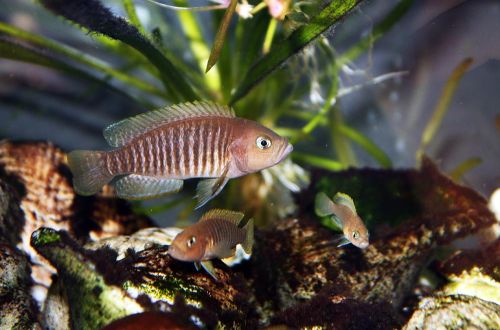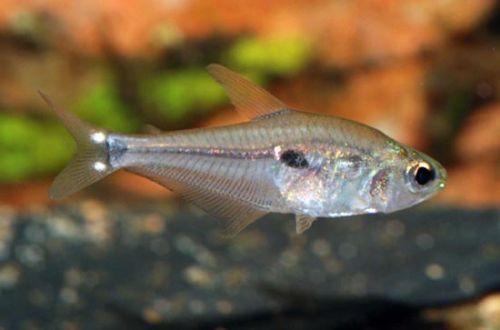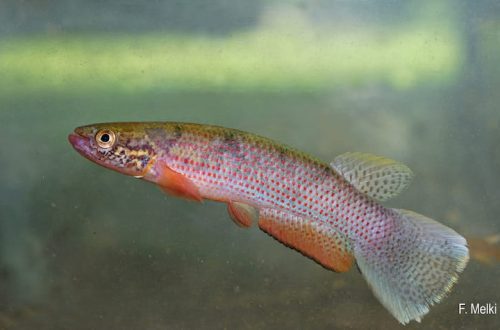
Lamprologus multifasciatus
Lamprologus multifasciatus, scientific name Neolamprologus multifasciatus, belongs to the Cichlidae family. A miniature and interesting fish in its behavior. Refers to territorial species that protect their site from the encroachment of relatives and other fish. Easy to keep and breed. Beginning aquarists are recommended to keep in a species aquarium.

Contents
Habitat
Endemic to the African Lake Tanganyika, one of the largest bodies of water in the world, located on the border of several states at once. The Democratic Republic of the Congo and Tanzania have the greatest extent. Fish live at the bottom near the coast. They prefer regions with sandy substrates and placers of shells, which serve them as shelters and spawning grounds.
Brief information:
- The volume of the aquarium – from 40 liters.
- Temperature – 24-27°C
- Value pH — 7.5–9.0
- Water hardness – medium to high hardness (10-25 dGH)
- Substrate type – sandy
- Lighting – moderate
- Brackish water – no
- Water movement – weak, moderate
- The size of the fish is 3–4 cm.
- Nutrition – high protein foods are preferred
- Temperament – conditionally peaceful
- Content in a group with a predominance of females
Description

Adult males reach a length of about 4.5 cm, females are somewhat smaller – 3.5 cm. Otherwise, sexual dimorphism is weakly expressed. Depending on the lighting, the color appears either light or dark. A similar effect is created due to the rows of vertical stripes of brown or gray. The fins are blue.
Food
The basis of the diet should be live or frozen foods, such as bloodworms, daphnia, brine shrimp. Dry sinking foods serve as an addition to the diet as a source of trace elements and vitamins.
Maintenance and care, arrangement of the aquarium
The recommended aquarium size for a small group of fish starts at 40 liters. The design uses fine sand soil with a depth of at least 5 cm and several empty shells, the number of which should exceed the number of fish. For this species, this is quite enough. The presence of live plants is not necessary, if desired, you can purchase several unpretentious varieties from among anubias and vallisneria, mosses and ferns are also suitable. Plants should be planted in pots, otherwise Lamprologus can damage the roots by digging in the sand.
In keeping, maintaining stable water conditions with suitable hardness (dGH) and acidity (pH) values, as well as preventing an increase in the concentrations of nitrogen compounds (ammonia, nitrites, nitrates) is of key importance. The aquarium must be equipped with a productive filtration and aeration system. Regularly clean and remove organic waste, weekly replace part of the water (10–15% of the volume) with fresh water.
Behavior and Compatibility
Territorial fish, each individual occupies a certain area on the bottom, no more than 15 cm in diameter, the center of which is the shell. Lamprologus multifasciatus will defend its territory from other fish and may even attack the aquarist’s hand, for example, during ground clearing. Despite such aggressive behavior, these fish do not pose a great danger to other neighbors due to their size. However, the introduction of the same aggressive species should be avoided, especially in a small aquarium. Otherwise, they can be combined with other representatives of Lake Tanganyika of comparable size.
Breeding / breeding
Under favorable conditions, breeding Lamprologus will not be difficult. The optimal ratio is when there are several females per male – this reduces the level of aggression between males and increases the chances of reproduction. With the onset of the mating season, the females lay their eggs inside the shells; after fertilization, they remain near the masonry to protect it. Males do not participate in the care of offspring.
The incubation period lasts about 24 hours, after another 6-7 days the fry begin to swim freely. From now on, it is advisable to transplant them into a separate aquarium in order to increase the chances of survival. Feed with specialized micro food or brine shrimp nauplii.
Fish diseases
The main cause of most diseases of cichlids from Lake Tanganyika is unsuitable housing conditions and poor quality food, which often leads to such a disease as African bloat. If the first symptoms are detected, you should check the water parameters and the presence of high concentrations of hazardous substances (ammonia, nitrites, nitrates, etc.), if necessary, bring all indicators back to normal and only then proceed with treatment. Read more about symptoms and treatments in the Aquarium Fish Diseases section.





